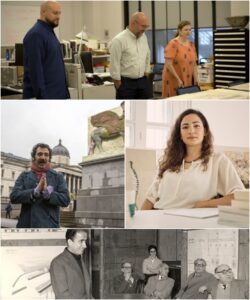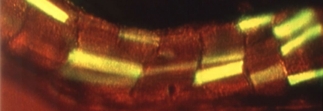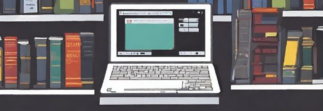The following press release was issued from the Tamayouz Excellence Award on September 12, 2018:
 The Tamayouz Excellence Award is delighted to announce the shortlist for the 2018 Middle Eastern Architectural Personality of the Year, given to individuals and organisations: the Mohamed Makiya Prize.
The Tamayouz Excellence Award is delighted to announce the shortlist for the 2018 Middle Eastern Architectural Personality of the Year, given to individuals and organisations: the Mohamed Makiya Prize.
The Mohamed Makiya Prize was established as part of the Tamayouz Awards program of championing the best of architecture in Iraq and the rest of the world; it is an annual prize open to both individuals and organisations who promoted, encouraged, campaigned or influenced directly or indirectly the advancement of architecture and the built environment in the Middle East between 2015 and 2017.
Out of 44 entries from 11 countries submitted for this year’s prize, four have been shortlisted and they are (in alphabetical order):
- Aga Khan Documentation Center at MIT – Massachusetts – Nominated and shortlisted for their role in supporting teaching of, and scholarship on, the history and theory of architecture, urbanism, environmental and landscape design, visual culture, and conservation, as well as the practice of architecture, in Muslim societies, with focus on the research and teaching activities of the faculty, students, and post-doctoral fellows at AKPIA. Situated within the MIT Libraries, AKDC@MIT, a part of the Aga Khan Program for Islamic Architecture (AKPIA) at MIT and Harvard, was established in 1979 by a gift from His Highness the Aga Khan. AKDC@MIT is also responsible for the curation of the intellectual and content core of Archnet, a globally-accessible, intellectual resource focused on architecture, urbanism, environmental and landscape design, visual culture, and conservation issues with a focus on Muslim cultures and civilizations.
- Arab Center for Architecture – Beirut – Nominated and shortlisted for their role in raising awareness about architecture and urbanism within civil society including the 2015-2017 UNESCO Exhibition in Kuwait and Lebanon “Heritage of Urban and Architectural Modernities in the Arab World”, 2015-2016; revealing Architecture, debates, guided tours, educational workshops and the production of leaflets on modern architectural and urban heritage in Lebanon, 2017-2018; coordination of the first Lebanese Participation at the International Architecture Exhibition, la Biennale di Venezia 2018; in addition to talks, awareness raising campaigns, networking with other archiving centers, documentation for architecture students.
- Michael Rakowitz – Chicago – Nominated and shortlisted for the 2018 Trafalgar Square Fourth Plinth’s winged bull Lamassu, Rakowitz reconstructed the Lamassu destroyed by ISIS in 2015. The sculpture brilliantly tells the story of the damage inflicted by the ongoing war on Iraqi culture and cultivation. Made of empty cans of Iraqi date-syrup, the Lamassu alludes to a once-renowned industry now decimated. The reconstruction fuses antiquity and modernity; its form reincarnating the image of the ancient hybrid figure, but its material content composed of modern tin cans. At the same time, the empty cans denote the absent indigenous date-syrup and connote the agricultural environment that has lasted from Mesopotamian antiquity to Iraqi modernity, but which is now subjected to contamination and possible disappearance. The reincarnated Lamassu “cries out” against the multiple contemporary forces enacting the catastrophic liquidation of human lives, ecological equilibrium, and cultural inheritance. The sculpture’s placement in the heart of the colonial-metropole is also emblematic of another historical layer – that of the British imperial Mesopotamian campaign which removed indigenous archaeological objects and shipped them to the British Museum. A kind of Mesopotamian haunting of empire, Rakowitz’s Lamassu also mirrors a city with its own dislocated Iraqis and its grocery stores bearing such names as Babylon and Baghdad. In Rakowitz’s words: “the sculpture can continue performing his duties as guardian of Nineveh’s past, present and future, even as a refugee or ghost, hoping to one day return to Iraq.”
- Rana Beiruti – Amman – Nominated and shortlisted for her role in the establishment and directorship of Amman Design Week. Rana is an architect, independent curator and cultural programmer, who holds a master’s Degree in Business Administration. Rana is also the Director of ‘The Lab’, an experimental art space at Darat al Funun – The Khalid Shoman Foundation, where she curates a program that offers residencies and learning opportunities to emerging artists. Rana championed the management and organization of Darat al Funun’s archive of 30 years of history in the arts, making the information accessible to researchers on-site and to the public online. Previously, Rana worked as a consultant to Studio-X Amman (part of the Columbia University Middle East Research Center) to introduce a multidisciplinary arts program in collaboration with GSAPP, the Graduate School of Architecture, Planning, and Preservation at Columbia University.
Academic and founder of the Tamayouz Excellence Award Ahmed Al-Mallak said: “Our warmest congratulations to the finalists, it was great to see more than 44 individuals and organisations working hard to raise architectural awareness, preserve our heritage and promote Middle Eastern culture in the region and worldwide. It is a great day to celebrate the achievements of people who work hard to tell our side of the story.”
The winner of the inaugural Mohamed Makiya Prize was Professor Khaled Al-Sultany. The winner of the 2018 Mohamed Makiya Prize will be announced in October.
The Tamayouz Excellence Award is sponsored by The Iraqi Business Council in Jordan, Kufa – Makiya Charity, Coventry University, Dewan Architects and Engineers, the United Nations Global Compact, Ayad Al-Tuhafi Architects, and Tradex Global Ltd.
The prize is named in honor of pioneering Iraqi architect Mohamed Makiya. Makiya donated his archive to the Aga Khan Documentation Center at MIT in 2011. Selections from the archive are available here. See our collections page for additional information.

